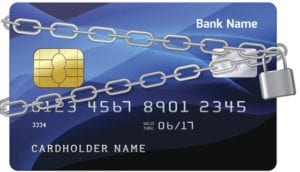In the banking world, every word counts. Whether you’re drafting a client email, preparing a report, or composing a proposal, your ability to communicate effectively can significantly impact your success. In a sector where precision and trust are critical, business writing is more than just a formality—it’s a vital tool that shapes perceptions, builds relationships, and ensures compliance. For banking professionals, mastering this skill is essential to navigating the complexities of the industry with clarity and confidence.
Why is Effective Business Writing Important for Banking Professionals?
Building Trust and Credibility
In the banking sector, trust is everything. Clients need to feel secure that their financial affairs are handled by competent professionals. Clear, concise, and error-free communication helps to build and maintain this trust. Miscommunication or ambiguous language can lead to misunderstandings that could damage client relationships or result in costly errors.
Compliance with Regulatory Standards
The banking industry is heavily regulated, and written communication often serves as a formal record of transactions, decisions, and agreements. Accurate and precise writing ensures that your documents meet regulatory standards and can withstand scrutiny if ever reviewed by auditors or legal professionals.
Enhancing Client Relationships
Effective communication is key to managing and nurturing client relationships. By presenting information in a clear and straightforward manner, you can ensure that clients fully understand their financial options and the implications of their decisions. This fosters stronger relationships and positions you as a trusted advisor.
Facilitating Internal Communication
Within the bank, clear writing helps coordinate efforts across teams, departments, and branches. Whether you’re writing a memo, report, or internal email, effective communication ensures that everyone is on the same page, reducing the risk of misunderstandings that could affect operations or service delivery.
Boosting Professional Image
The quality of your writing reflects your professionalism and attention to detail. Well-constructed documents convey competence and care, enhancing your reputation within the bank and with external partners. Poorly written communication, on the other hand, can undermine your credibility and lead to negative perceptions.
Business Writing Tips for Better Banking Communication
Know Your Audience
Before you begin writing, take a moment to consider who will be reading your document. Are you addressing a client, a colleague, or a regulator? The tone, style, and level of detail you include should be tailored to the needs and expectations of your audience. For instance, a client-focused document should be more straightforward and devoid of industry jargon, while internal communications can be more technical.
Be Clear and Concise
In banking, clarity is paramount. Avoid unnecessary jargon or overly complex language that might confuse your reader. Stick to simple, direct sentences that convey your message efficiently. Each word should serve a purpose. Long-winded explanations or convoluted language can lead to misinterpretation, which could have serious consequences in banking.
Use Proper Formatting
Proper formatting helps your reader quickly grasp the key points of your message. Use bullet points, subheadings, and short paragraphs to break up text and make it more digestible. This is particularly important in lengthy reports or emails, where readers need to be able to scan for important information quickly. Consistent use of headings, fonts, and spacing also contributes to a more professional appearance.
Proofread and Edit
Never underestimate the power of a well-proofread document. Even minor errors can detract from the professionalism of your writing. Take the time to review your work for spelling, grammar, and punctuation mistakes. Also, consider the overall flow and structure of your document—ensure that it follows a logical order and that all points are clearly connected. When possible, have a colleague review your work; a fresh set of eyes can often catch mistakes you might have missed.
Keep It Professional
Maintain a professional tone in all your communications, even in internal emails. This means avoiding slang, overly casual language, and emoticons. While being polite and respectful is important, your writing should also be direct and concise. Remember, in the banking industry, your writing often serves as a record of your actions and decisions, so it needs to be polished and professional.
Focus on the Purpose
Every piece of writing should have a clear purpose. Whether providing information, making a request, or offering advice, ensure that your main message is easily identifiable. Start with your key point, then support it with the necessary details. Avoid including unrelated information that could distract from your primary message.
Be Mindful of Tone
The tone of your writing can significantly impact how your message is received. In banking, it’s important to strike the right balance between professionalism and approachability. Your tone should convey authority and confidence without appearing cold or distant. If you’re delivering bad news or addressing a sensitive issue, choose your words and tone thoughtfully to maintain a positive relationship with the reader.
Use Templates Wisely
Templates can be a great tool for ensuring consistency and saving time, especially for routine communications. However, they should be used wisely. Always customize templates to fit the specific context of your message. This ensures that your writing remains relevant and tailored to the situation rather than appearing generic or impersonal.
Incorporate Visual Aids When Necessary
Incorporating charts, graphs, or tables can help clarify and support your points in complex banking documents, such as reports or proposals. Visual aids can make it easier for readers to understand data or trends, especially when dealing with large amounts of information. However, ensure these visuals are clearly labeled and seamlessly integrated into the text.
Keep a Reference Library
To continually improve your writing, keep a reference library of resources such as style guides, banking terminology glossaries, and examples of well-written documents. This can be a valuable tool when unsure about a specific term, format, or style, helping you maintain high standards in all your communications.
Learn More Business Writing Tips & Tricks
Mastering business writing in the banking industry is not just about avoiding mistakes—it’s about communicating with precision, clarity, and professionalism. BankersHub’s Better Business Writing – How to Write Right webinar is designed to give you practical and useful tips on streamlining your content into a logical, convincing read. Whether you’re a credit analyst, loan administrator, or commercial lender, clear writing is critical to your work. Our webinar will help you remove ambiguity, tighten punctuation, and build stronger, easy-to-understand explanations and recommendations. Register today to ensure your words reach your audience efficiently and effectively!








